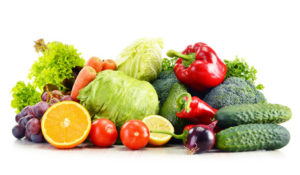 Once again a study finds an association between a Western diet (lots of processed meat, red meat, fried food, desserts, low fiber, high in refined grains, sugar sweetened beverages, and high-fat dairy) and a poor health outcome - this time a significantly higher incidence of late-stage age-related macular degeneration (AMD).
Once again a study finds an association between a Western diet (lots of processed meat, red meat, fried food, desserts, low fiber, high in refined grains, sugar sweetened beverages, and high-fat dairy) and a poor health outcome - this time a significantly higher incidence of late-stage age-related macular degeneration (AMD).
Interestingly though, a Western dietary pattern did not seem to be associated with whether a person developed early AMD - only with whether it would progress to late-stage AMD. And late-stage AMD is the one that results in loss of central vision (in the retina), which means a person will then be unable to drive.
This study followed 1278 people over an 18 year period. Those who ate a Western style diet (considered unhealthy) had a 3 times higher rate of late-stage AMD as compared to those who had a "prudent" (healthy) dietary pattern. Out of 1278 persons - 117 developed early AMD and 27 developed late AMD (20 of them progressed from no AMD to late AMD over the 18 years, and 7 progressed from early AMD to late AMD).
What kinds of foods seemed especially protective? The researchers said that eating the following foods appeared protective: cruciferous (e.g. broccoli), foods high in carotene (e.g. carrots), dark green leafy and other vegetables, poultry, fresh fruits, legumes, fish and sea foods - what they called part of a "prudent" diet, but can also be thought of as a Mediterranean dietary pattern.
One thing I question is whether "high fat dairy" (which they said was margarine & butter) should have lumped together margarine and butter. After all, margarine is a concoction made with trans fats and linked to health problems, while butter (made from milk/cream) is very different.
From Science Daily: Poor diet linked to age-related macular degeneration
Participants who ate a diet high in red and processed meat, fried food, refined grains and high-fat dairy were three times more likely to develop an eye condition that damages the retina and affects a person's central vision, according to the results of a study from the University at Buffalo.
The condition is called late-stage age-related macular degeneration (AMD). AMD is an irreversible condition that affects a person's central vision, taking away their ability to drive, among other common daily activities.
"Treatment for late, neovascular AMD is invasive and expensive, and there is no treatment for geographic atrophy, the other form of late AMD that also causes vision loss. It is in our best interest to catch this condition early and prevent development of late AMD," said Shruti Dighe, who conducted the research as part of her master's in epidemiology at UB's School of Public Health and Health Professions.
And that's why the finding that diet plays a role in AMD is so intriguing, added Dighe, who is now pursuing her PhD in cancer sciences at Roswell Park Comprehensive Cancer Center.
It turns out that a Western dietary pattern, one defined as high in consumption of red and processed meat, fried food, refined grains and high-fat dairy, may be a risk factor for developing late AMD.
However, a Western diet was not associated with development of early AMD in the study, published this month in the British Journal of Ophthalmology.
The authors studied the occurrence of early and late AMD over approximately 18 years of follow-up among participants of the Atherosclerosis Risk in Communities (ARIC) Study. Dighe and colleagues used data on 66 different foods that participants self-reported consuming between 1987 and 1995 and identified two diet patterns in this cohort -- Western and what researchers commonly refer to as "prudent" (healthy) -- that best explained the greatest variation between diets.
"What we observed in this study was that people who had no AMD or early AMD at the start of our study and reported frequently consuming unhealthy foods were more likely to develop vison-threatening, late stage disease approximately 18 years later," said study senior author Amy Millen, PhD, associate professor and associate chair of epidemiology and environmental health at UB.
Early AMD is asymptomatic, meaning that people often don't know that they have it. To catch it, a physician would have to review a photo of the person's retina, looking for pigmentary changes and development of drusen, or yellow deposits made up of lipids. With early AMD, there could be either atrophy or a buildup of new blood vessels in the part of the eye known as the macula.
"When people start developing these changes they will begin to notice visual symptoms. Their vision will start diminishing," Dighe said. "This is advanced or late stage AMD."
But not everyone who has early AMD progresses to the more debilitating late stage.
To date, most research has been conducted on specific nutrients -- such as high-dose antioxidants -- that seem to have a protective effect. But, Dighe explains, people consume a variety of foods and nutrients, not just one or two, and that's why looking at diet patterns helps tell more of the story.
"Our work provides additional evidence that that diet matters," Millen added. "From a public health standpoint, we can tell people that if you have early AMD, it is likely in your best interest to limit your intake of processed meat, fried food, refined grains and high-fat dairy to preserve your vision over time."
